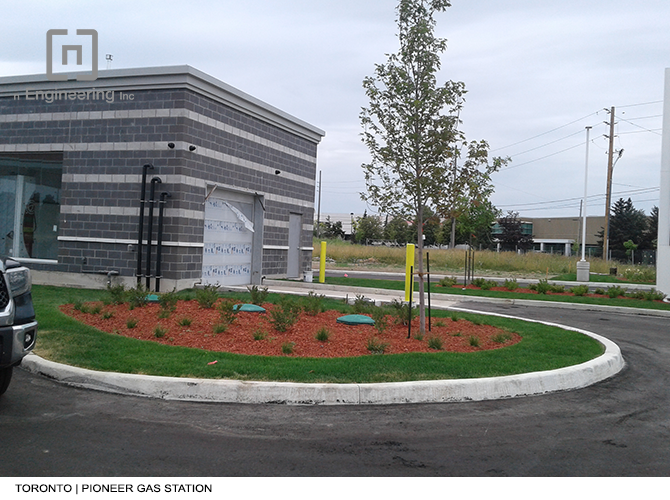A feasibility study is a critical part of the project planning process, helping businesses and organizations evaluate the practicality of a proposed idea before committing to it. By conducting a feasibility study, you can assess the likelihood of a project’s success and ensure that resources are used efficiently, mitigating risks that could derail its completion. Whether it’s a new construction project, a business venture, or any large-scale undertaking, a well-conducted feasibility study can provide invaluable insights into the viability of the project.
In Ontario, particularly, businesses and developers are increasingly recognizing the importance of conducting detailed feasibility studies Ontario to navigate the complex regulatory environment, financial requirements, and market dynamics. In this comprehensive guide, we will explore what a feasibility study involves, why it’s important, and how it can be executed to ensure the success of your project. We will also delve into how n Engineering, a leading provider of engineering and consulting service, can help you conduct thorough feasibility studies to guarantee informed decision-making and project success.
What is a Feasibility Study?
A feasibility study is a preliminary analysis that assesses whether a project is achievable in terms of technical, financial, and operational feasibility. It examines the potential for success and identifies any risks associated with the proposed project. The key objectives of a feasibility study include:
- Assessing Project Viability: A feasibility study helps to determine whether a project is worth pursuing, whether it meets the market demand, and if the necessary resources are available to implement it.
- Identifying Risks: It helps in identifying potential risks, including regulatory, technical, financial, and operational challenges that may arise during the execution of the project.
- Resource Assessment: A feasibility study evaluates whether sufficient resources—such as finances, labor, equipment, and materials—are available to complete the project successfully.
- Providing Solutions: The study also provides recommendations on how to overcome potential challenges and improves the chances of successful implementation.
Why is a Feasibility Study Important?
1. Risk Mitigation : The primary reason for conducting a feasibility study is to mitigate risks. Every project has inherent risks, whether it’s financial, technical, or operational. A feasibility study allows you to identify these risks early on, ensuring that appropriate strategies are put in place to avoid or minimize them. Whether it’s an infrastructure project in Ontario or a startup business, identifying potential pitfalls beforehand can save significant time and resources in the long run.
2. Financial Planning and Budgeting : A feasibility study provides a Servicing Feasibility Analysis, including cost estimates, expected revenues, and potential profitability. This helps stakeholders and investors understand the financial implications of the project and determine if it’s a worthwhile investment. Accurate financial data can also help in securing financing and setting a realistic project budget.
3. Strategic Decision-Making : The insights gained from a feasibility study enable business owners, project managers, and developers to make well-informed strategic decisions. It provides them with a clear understanding of the project’s scope, potential return on investment (ROI), and the resources required to complete it successfully.
4. Legal and Regulatory Compliance : For many projects, especially in highly regulated sectors like construction or environmental management, understanding the legal and regulatory framework is essential. A feasibility study often includes an analysis of local regulations, zoning laws, and environmental impact assessments. This is particularly critical in Ontario, where numerous regulations and permits govern construction projects, land use, and environmental protection.
Types of Feasibility Studies
Feasibility studies can vary in scope and detail, depending on the nature of the project. Here are some of the most common types of feasibility studies:
1. Technical Feasibility : This type of study evaluates whether the technical aspects of the project are achievable. It looks at factors such as the technology required, availability of technical resources, and the expertise needed to carry out the project. For construction projects, a technical feasibility study would analyze the engineering challenges, such as soil conditions, construction techniques, and the technical requirements for infrastructure.
2. Financial Feasibility : A financial feasibility study assesses whether the project is financially viable. It involves creating detailed financial projections, including costs, revenues, and expected profits. It also helps determine whether the project is within budget and whether the return on investment (ROI) justifies the initial investment.
3. Operational Feasibility : An operational feasibility study looks at how the project will be executed on a day-to-day basis. It involves analyzing the human resources, equipment, and operational processes needed to complete the project. This is particularly important for businesses that will be required to operate continuously after project completion.
4. Market Feasibility : This type of study focuses on market research and evaluates whether there is a sufficient demand for the product, service, or infrastructure being proposed. In Ontario, market feasibility might involve researching local demand for new developments, transportation infrastructure, or commercial spaces.
5. Legal Feasibility : The legal feasibility study examines whether the project is compliant with all relevant laws and regulations. In Ontario, this might include ensuring that the project complies with zoning laws, building codes, environmental regulations, and any other legal requirements. It’s an essential part of any feasibility study in regulated sectors like construction or energy.
Steps Involved in Conducting a Feasibility Study
Conducting a feasibility study involves several key steps that help assess the viability of a project. Here’s a breakdown of the typical process:
Step 1: Define the Project : The first step in a feasibility study is defining the project clearly. This involves understanding the scope, objectives, and deliverables. For example, if the project involves building a new office complex in Ontario, you would define the key elements of the project, including the location, design, size, and purpose of the building.
Step 2: Conduct Preliminary Research : Next, conduct preliminary research to gather relevant information, such as market trends, local regulations, and technical requirements. This research helps identify any potential challenges that may affect the project’s feasibility.
Step 3: Assess Technical Feasibility : A Site feasibility assessment is crucial, as it identifies whether the technology, expertise, and infrastructure needed for the project are available. This might include conducting surveys of the land, assessing available technologies, and examining the skills of the project team.
Step 4: Financial Analysis : The financial analysis is one of the most critical aspects of a feasibility study. This step involves estimating the total cost of the project, as well as the potential revenue or value the project can generate. Financial projections, including ROI calculations, are developed to help stakeholders make informed decisions.
Step 5: Evaluate Legal and Regulatory Issues: In Ontario, projects are often subject to numerous local regulations, including zoning laws, building codes, and environmental guidelines. A legal feasibility study ensures that the project can be completed without running into legal or regulatory roadblocks.
Step 6: Market Assessment: Market research helps determine whether there is demand for the proposed project. If the project involves developing a new commercial property, market feasibility would involve analyzing the local real estate market, competition, and potential buyers or tenants.
Step 7: Risk Analysis : Conducting a thorough risk assessment is crucial. This analysis helps identify potential risks such as cost overruns, regulatory hurdles, technical failures, or market volatility. Mitigation strategies are developed to minimize these risks.
Step 8: Recommendations and Conclusion : Once all aspects of the feasibility study have been evaluated, the results are compiled, and a final report is produced. This report outlines the findings and provides recommendations for moving forward. If the study shows that the project is feasible, it can proceed to the next stages of development.
The Role of n Engineering in Feasibility Studies
At n Engineering, we specialize in providing comprehensive feasibility studies Ontario for projects of all sizes and complexities. Whether you’re planning a commercial development, infrastructure project, or industrial expansion, our team of experienced engineers and consultants will work closely with you to assess the technical, financial, and operational aspects of your project.
Why Choose n Engineering?
- Expertise: With years of experience in the engineering and consulting sector, n Engineering offers in-depth knowledge and expertise in conducting comprehensive feasibility studies.
- Tailored Solutions: We understand that every project is unique, so we provide customized feasibility studies tailored to the specific needs of each project.
- Regulatory Knowledge: Our team is well-versed in Ontario’s regulatory environment, ensuring that your project complies with all relevant laws and zoning requirements.
- Comprehensive Analysis: From technical feasibility to financial projections and market analysis, we cover every aspect of the feasibility study to give you a clear picture of the project’s viability.
Conclusion
A well-executed feasibility study is essential for ensuring the success of any project. Whether you are planning a new construction, starting a business, or developing infrastructure, understanding the feasibility of the project before you begin is crucial. With the expertise of n Engineering, you can confidently assess your project’s viability, identify potential risks, and ensure that your project moves forward with the best possible chance of success. If you’re planning a project in Ontario, reach out to n Engineering today to learn how we can help you conduct a thorough feasibility study Ontario to set your project up for success.

